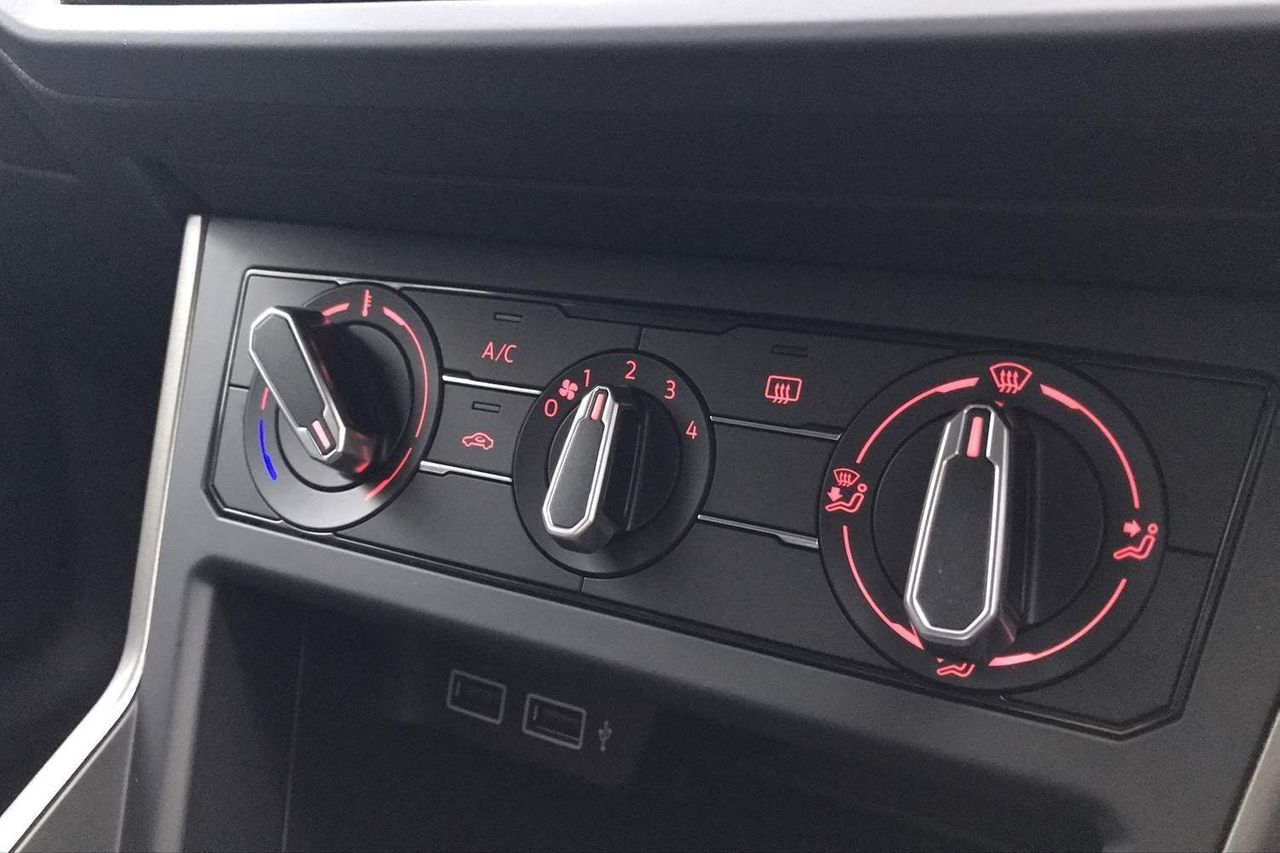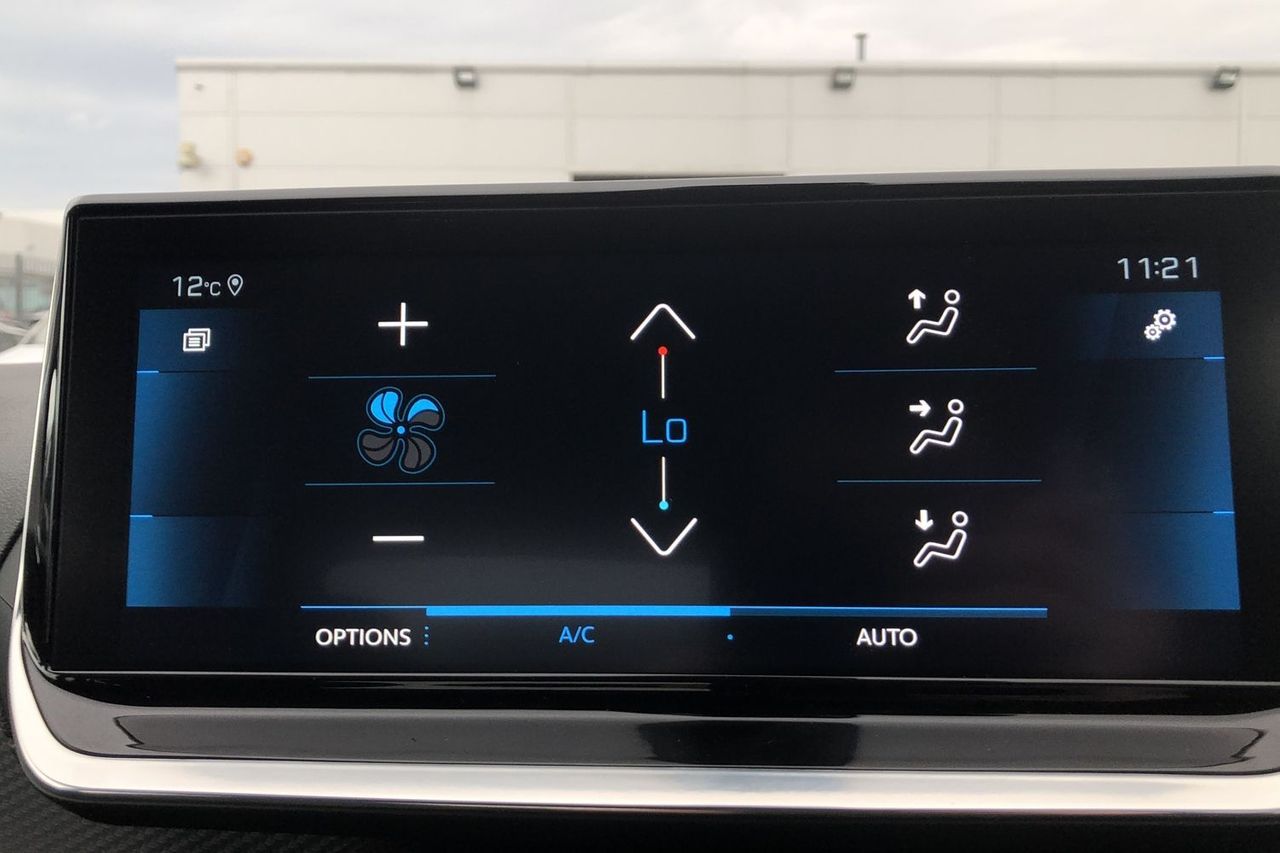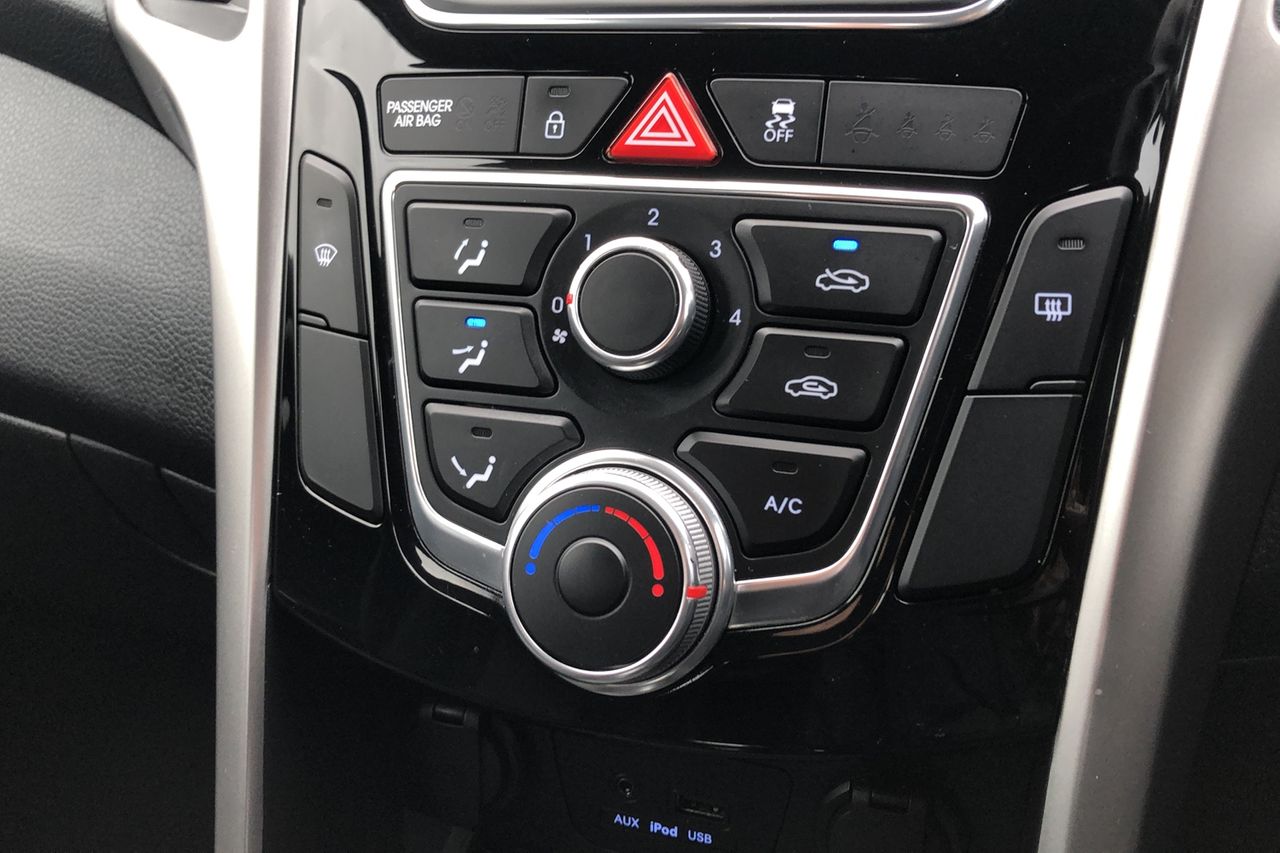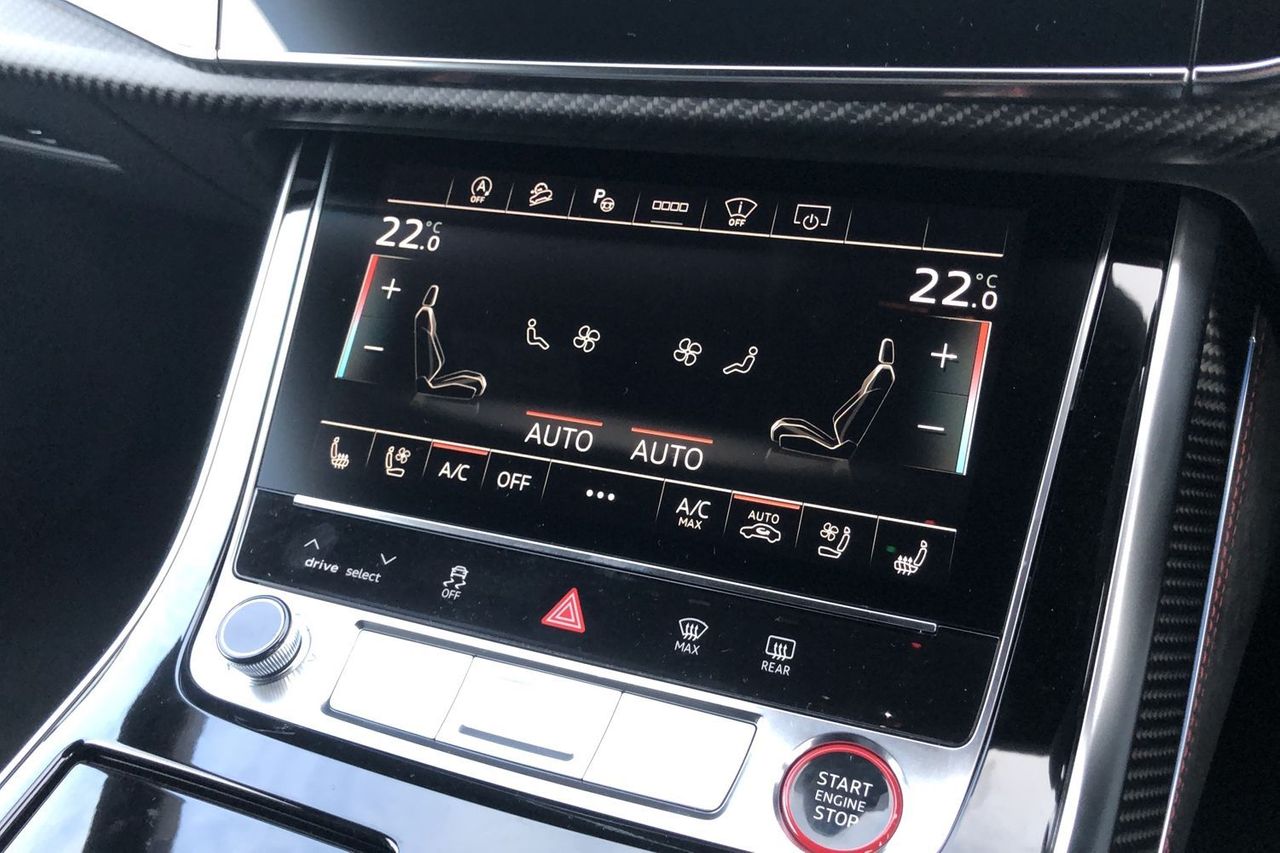So what are the different AC types and what do they all do? Let us explain…
Now that the sunny weather is finally upon us, keeping cool in the car takes more of an importance than it does at other times of year. Though lowering the windows, sliding the sunroof back or - in certain cars - folding away the roof completely may seem like a good option to keep the heat at bay, there’s really only one way of properly doing it - and that’s with air conditioning.
Some cars have more complex climate control systems than others, ranging from manual air conditioning to automatic air conditioning, but all feature a myriad of buttons to help control them...

What is Air Conditioning?
Air conditioning and climate control systems keep a constant temperature inside your car. In its most simple form, manual air conditioning, you select whether you want it cooler or hotter than it currently is in the cabin, deciding the blower speed and air distribution manually, and this will be the same temperature throughout the entire car.
A car’s A/C system works by cooling the ventilated air with a refrigerant gas, which then circulates through your car to cool it, whilst also helping to filter out pollen, pollutants and bacteria.
What is Climate Control?
Climate control in a car allows you to set the desired temperature of the cabin, using extra sensors and a computer to allow more precise management of the cabin temperature.
What is Automatic Climate Control (Automatic A/C)?
Automatic Climate Control provides electronic control of the temperature, air-flow and air distribution inside the car, by controlling the fan speed and air circulation automatically.
Zone Climate Control
If you’re car shopping, you may have come across the terms “dual-zone climate control,” and “tri-zone climate control”, perhaps even “quad-zone”.These zones refer to two sets of controls, so that the driver and passengers can control their own ‘micro-climate’ within the car.
Dual Zone Climate Control / 2-zone Air Conditioning
Dual zone climate control in a car separates the car into left and right halves, allowing you to control both zones, or adjust them separately.
Tri Zone Climate Control /3-zone Air Conditioning
Using the 3-zone climate control, separates the left and right front passengers, as well second-row passengers in the rear of the car, so all passengers can choose their own individual climate.
Quad Zone Climate Control /4-zone Air Conditioning
In some cars, you have the option to adjust the air conditioning for each seating zone, meaning that each side of the second row gets individual controls, or, in a 3-row vehicle, both the second and third seating rows can tailor the temperature, blower intensity and direction of the air to their needs.
What do the symbols on my car AC mean?
Do you have a firm understanding of your car’s AC, or are you guilty of pushing car buttons randomly and hoping the air feels more comfortable as a result? If you’ve bi-passed reading your car’s manual to learn how to operate the AC, you may want to know what those common A/C symbols mean.


Snowflake Button / A/C Button
The snowflake button is one of the most crucial to the air conditioning’s control. Why? Well, it turns the system on, for starters. Pushing the aircon snowflake ac symbol engages the air conditioning, and kick-starts the a/c pump which draws heat and moisture out of the air before leaving it cooler than it was before.
One thing to note - you’ll have to turn the air blowers on in order for the air conditioning system to initiate.
- Fan - The fan symbol indicates the power that air will be blown through the car’s vents. Where there are two icons, one just an outline and one that is filled in, the filled in symbol indicates a higher strength.
- Front Windshield Defrost - The symbol consisting of wavy lines intersecting an upside down curved trapezoid (to represent the front windscreen) is the windscreen defrost function. Activating this will trigger the vents at the base of the windshield to expel hot air, gradually warming the glass and eliminating condensation and frost to defog your cars windscreen.
- Rear Window Defrost - The button showing wavy lines intersecting a rectangle, activates rear window defrost functionality.
- Upper Airflow - Pressing the button showing an arrow pointed at a person’s face will limit the air to blow only through the vents located on the dashboard at chest-level.
- Lower Airflow - The button with an arrow pointed at a person’s feet will only blow air through the vents located underneath the dashboard and underneath the seats to the back-row passengers.
Recirculation
Do you see that button on your dashboard with the image of a car and a curved arrow? Want to get your car as cool as possible? You’ll want to use this button, the recirculation button.‘But what is the recirculation button in a car?’ we hear you ask! Well, it recycles the cold air generated from the air conditioning system, instead of pulling the warmer air from outside into the car. When used correctly, using the recirculation button can help save on fuel consumption.
The longer the recirculation button is on, the cooler your car will be, just make sure you don’t use it when things get chilly outside. This is because the air conditioning needs to be adding fresh air to the cabin and reducing the amount of moisture inside - so fogged up windows are more likely to happen, so if your windshield and windows are fogging up, be sure to check the recirculation button is switched off.
- External Air Intake - If the arrow is entering the car from the outside, the heating, ventilation and air conditioning system will draw in air from outside the vehicle. If you don’t see this icon, your car will do this automatically when the air recirculation button is off.
- Auto sign - Most new cars on sale today come with automatic air conditioning. This means that the on-board system notices the desired temperature you’ve set for the cabin, and constantly adjusts the air conditioning to ensure that this is maintained.
- Sync - The sync button again applies to those cars which are fitted with dual-zone climate control. As driver and passenger can both choose separate temperatures, it can mean that one side of the car has the potential to be wildly warm and the other freezing cold. Clicking the ‘sync’ button aligns the two temperatures - meaning the cabin will be one consistent heat rather than two.
- The Importance of an Air Con Service - An air-con service can help keep your air-con system in top condition. This includes draining and re-gas the system; disinfecting it; checking the hoses, filters, belts and connections to ensure there are no little splits where the gas can leak out as well as checking the performance of the compressor and condenser.

Why should you service your Car AC?
The refrigerant gas dissipates and if you don’t replace the lost gas, then your air conditioning system will become less and less effective, as well as less efficient, which can increase fuel consumption.
An effective AC system in the car will maintain the cool temperature in the car and make the environment humid free. Air con protects you from hazardous air pollution and health issues by filtering the air. In winters, cars usually face visibility problems due to fog. Air con is needed to regulate the inside temperature and maintain your safety. Ideally, an air-con service should be carried out every 2 years.
Car Air Conditioning Tips
What tips are there for using the Climate Control & A/C effectively? Always keep the windows closed whilst the air-con is on to maximize the efficiency of the A/C Keep the air conditioner in the recirculating mode when in use Use the air-conditioner only when it is necessary to improve fuel efficiency
Keep the front grill clear of obstructions Air vents are - obviously - the source of the air being transferred into the cabin. Keeping them clear and dust-free means you shouldn’t get any grubby air sent into the interior of your car.
Keep your Air Conditioning working as good as new!
Book your Air Con service with us